
.png)

.png)
.png)


-
.png) 0086-757-85407388
0086-757-85407388 -

-
 terrychen@wintoly.com
terrychen@wintoly.com


.png)

.png)
.png)


.png)



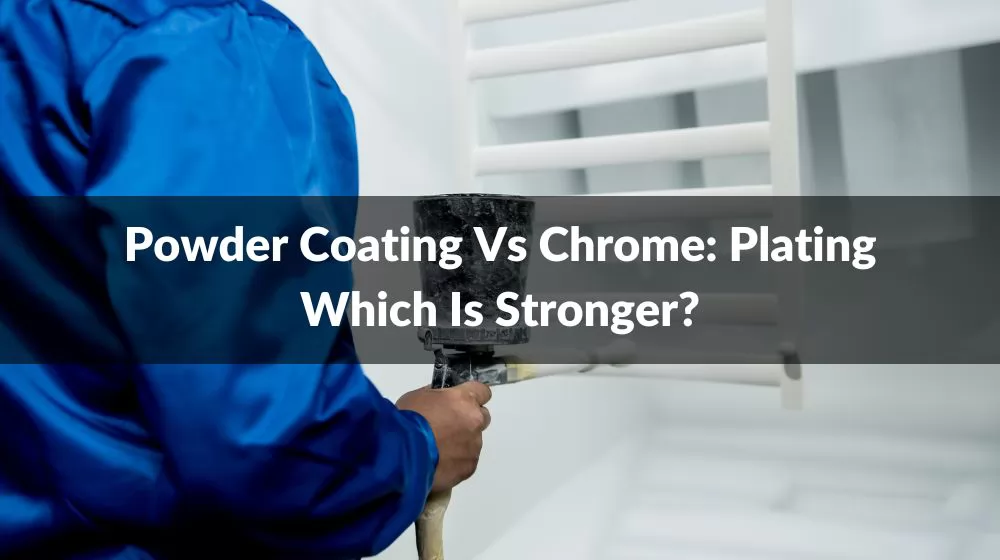
When it comes to choosing a finishing technique for surfaces, the comparison between powder coating and chrome plating often centers on strength and durability. Both methods offer unique qualities, and the determination of which is stronger involves considering various factors such as resistance to corrosion, impact resilience, and overall robustness. In this exploration, we delve into the strengths of powder coating and chrome plating, seeking to understand their respective advantages in different applications.
Powder Coating Composition
Powder coatings are a combination of the following raw materials:
Resins- Polyester or Epoxy, this gives the powder its performance capabilities. Polyester for a durable finish with good resistance to UV and weather exposure. Epoxy for good chemical resistance however not suitable for external use.
CURING AGENTS:Help to bind the coating
ADDITIVES:Various with a wide range of properties for example; degasser to help the air escape from the substrate during the curing process therefore helping to restrict pin holing.
PIGMENTS:For colour
TITANIUM DIOXIDE:White pigment used in all coatings, amongst other properties it helps to create brightness by dispersing light.
EXTENDERS:Reduce glossiness.
Once the required ingredients have been pre weighed, they are dry mixed before being extruded. This process melts the mix, activating the resin and hardeners before it is rolled flat on a conveyorised belt. The now cool mix is broken down in to chips, ground and then finely sieved to ensure no large particles contaminate the powder.
Because no solvents are present, powder coating is an environmentally friendly and cost effective alternative to traditional liquid paints. Furthermore, as the application is done electrostatically, the paint is recoverable and therefore re-usable. With no drying times required as the hardening is oven cured, powder coated products are ready to use as soon as they leave the production line!
Powder Coating Types
In the realm of powder coatings, there are a variety of types available, each serving different purposes and applications. The characteristics of each type vary, making the selection of the appropriate powder coating for specific applications a crucial step. Exploring these different types helps manufacturers ensure they're choosing the right coating that would best serve the needs of their project.
Powder Coating Equipment
Powder coating requires specialized equipment for effective application. This equipment can vary based on the specific powder application methods, which include electrostatic spray and fluidized bed, among others. The components of a typical powder coating system include a spray gun, a fluidized hopper bed, a curing oven, and a conveyor system, among others.
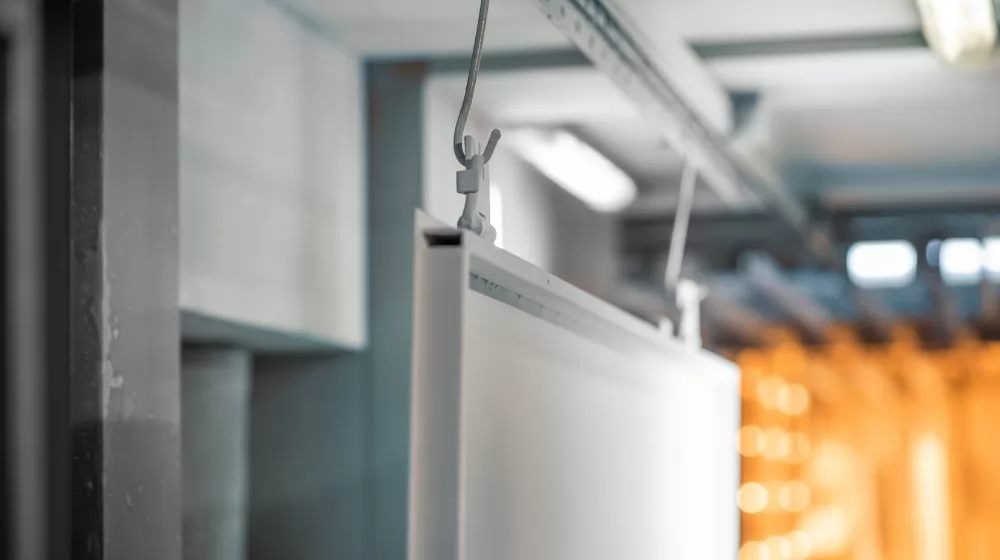
Powder coating offers a range of advantages, making it a popular choice for various industries. Here are some key benefits of powder coating:
Environmental Friendliness:
Powder coating is an environmentally friendly alternative to traditional liquid paints. It contains little to no volatile organic compounds (VOCs), reducing air pollution and minimizing the impact on the environment.
Cost-Effectiveness:
Powder coating is a cost-effective option due to its efficiency in material usage. The absence of solvents means that there is minimal waste, and oversprayed powder can be collected and reused, reducing overall material costs.
Durability and Toughness:
Powder-coated surfaces exhibit exceptional durability and toughness. The cured powder forms a hard finish that is resistant to scratches, chipping, fading, and general wear and tear, providing long-lasting protection to coated products.
Wide Range of Colors and Finishes:
Powder coatings come in a vast array of colors, textures, and finishes. This versatility allows for creative and customizable designs, catering to diverse aesthetic preferences and functional requirements.
Chemical Resistance:
Depending on the chosen resin type, powder coatings can offer excellent chemical resistance. Epoxy-based powders, for example, are particularly resistant to chemicals, making them suitable for applications where exposure to corrosive substances is a concern.
UV and Weather Resistance:
Polyester-based powder coatings are known for their superior resistance to UV rays and weather exposure. This makes them ideal for outdoor applications, as they maintain their color and appearance over extended periods without degradation.
Ease of Application:
The application process of powder coating is efficient and relatively straightforward. With the use of electrostatic spray guns or fluidized beds, the powder adheres uniformly to the substrate, minimizing the need for extensive manual labor.
Efficient Production Process:
Powder coating does not require drying time, as the curing process occurs in a dedicated oven. This results in a faster and more streamlined production process compared to traditional liquid paint applications.
Reduced Health Risks:
The absence of solvents in powder coatings reduces health risks for both workers and end-users. There are no harmful fumes or toxins released during application, contributing to a safer working environment.
Quality and Consistency:
Powder coating provides a high-quality, consistent finish. The even distribution of powder particles ensures uniform coverage, resulting in a smooth and professional appearance on the coated surface.
Reduced Maintenance Requirements:
Due to its durability, powder-coated surfaces generally require less maintenance. The resistance to chipping, peeling, and fading means that the coated products maintain their appearance for an extended period, reducing the need for frequent touch-ups or re-coating.
Overall, the numerous advantages of powder coating contribute to its widespread adoption in various industries, ranging from automotive and appliances to architectural and industrial applications.
Chrome plating, a time-honored finishing technique, involves electroplating a thin layer of chromium onto an object's surface. The process includes immersing the item in a solution of chromic acid and utilizing electric current to deposit chromium, resulting in a lustrous, mirror-like finish. This method has enjoyed widespread popularity for decades, particularly in the automotive and decorative industries.
The key advantages of chrome plating lie in its dazzling shine and robust resistance to corrosion. Its ability to provide an aesthetically appealing finish has led to its frequent use for decorative purposes, such as on car bumpers, wheels, and various fixtures.
Nevertheless, chrome plating is not exempt from drawbacks. The chemicals employed in the process, particularly hexavalent chromium, are highly toxic, presenting potential environmental and health hazards. This environmental concern highlights the need for responsible handling and disposal practices within the industry. Despite its enduring popularity, efforts are being made to explore alternative finishing methods that maintain the visual appeal of chrome while mitigating its associated environmental and health risks.
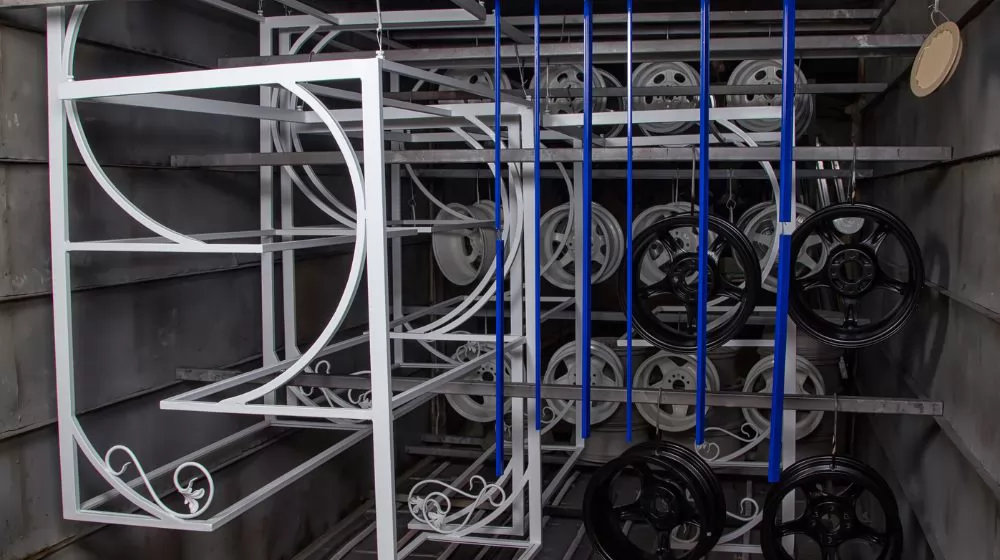
Chrome plating offers several advantages, making it a popular choice for various applications:
Aesthetic Appeal: One of the primary advantages of chrome plating is its ability to provide a brilliant and mirror-like finish. This aesthetic appeal enhances the overall look of items, making them visually striking and appealing.
Corrosion Resistance: Chrome-plated surfaces exhibit robust resistance to corrosion. This makes chrome an excellent choice for protecting objects from environmental elements and extending their lifespan.
Hardness and Durability: The deposited chrome layer contributes to increased hardness and durability of the plated object. This makes it suitable for applications where resistance to wear and tear is crucial, such as in automotive components.
Smooth and Easy to Clean: Chrome plating results in a smooth surface that is easy to clean and maintain. This characteristic is particularly advantageous in applications where hygiene and cleanliness are essential.
Versatility: Chrome plating can be applied to a wide range of materials, including metals and plastics. This versatility allows for its use in diverse industries, from automotive to home decor.
Enhanced Lubricity: Chrome-plated surfaces often exhibit improved lubricity, reducing friction between moving parts. This makes it beneficial in applications where smooth operation and minimal wear are essential.
Heat Resistance: Chrome plating can provide a level of heat resistance, making it suitable for applications where exposure to high temperatures is a consideration.
Electrical Conductivity: Chromium is a good conductor of electricity, and chrome plating can maintain or enhance the electrical conductivity of the underlying material, making it suitable for certain electronic and industrial applications.
Despite these advantages, it's important to note the environmental and health considerations associated with the chemicals used in the chrome plating process, particularly hexavalent chromium, which can pose significant risks if not handled and disposed of responsibly. As a result, there is ongoing research into alternative plating methods that maintain the positive attributes of chrome while addressing its drawbacks.
The durability of chrome plating versus powder coating depends on the specific application and the conditions to which the object will be exposed. Both chrome plating and powder coating offer distinct advantages, and the choice between them often comes down to factors such as aesthetics, corrosion resistance, and the nature of the item being coated.
Durability of Chrome Plating:
Corrosion Resistance: Chrome plating is known for its excellent corrosion resistance, making it highly durable in environments where exposure to moisture, chemicals, or harsh weather conditions is a concern.
Wear Resistance: Chrome plating can enhance the hardness and wear resistance of surfaces, making it suitable for applications where resistance to abrasion and friction is crucial.
Aesthetic Appeal: Chrome plating provides a shiny, mirror-like finish that maintains its appearance over time, contributing to its long-lasting visual appeal.
Durability of Powder Coating:
Corrosion Resistance: Powder coating also offers good corrosion resistance, although it may not be as impervious to corrosion as chrome plating in certain extreme conditions.
Impact Resistance: Powder coating tends to be more flexible than chrome plating, making it less prone to chipping, cracking, or peeling upon impact. This can be an advantage in applications where the coated item may experience physical stress.
Variety of Finishes: Powder coating provides a wide range of color options and finishes, contributing to its durability by offering protection against fading, chalking, and UV exposure.
Considerations:
Application Specifics: The choice between chrome plating and powder coating often depends on the specific requirements of the application. For example, automotive parts may benefit from the aesthetic appeal and corrosion resistance of chrome plating, while outdoor furniture might benefit from the impact resistance and color options offered by powder coating.
Environmental Impact: Chrome plating involves the use of toxic chemicals, including hexavalent chromium, which can pose environmental and health risks. Powder coating is generally considered more environmentally friendly as it produces less waste and does not involve harmful chemicals.
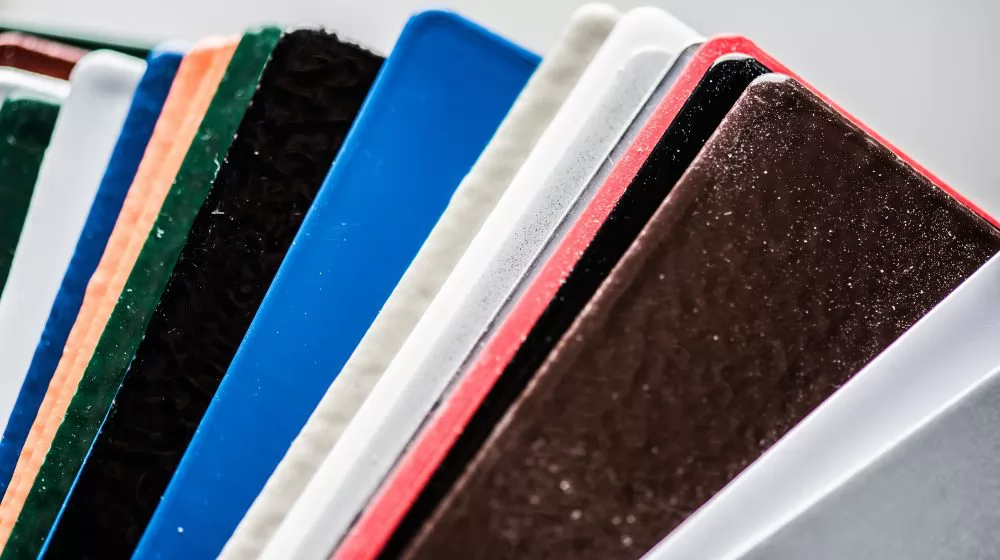
In general, powder coating is often considered more cost-effective than chrome plating. Several factors contribute to this cost difference:
Material Costs:
Powder Coating: The materials used in powder coating, including the powder itself, are typically less expensive than the chromium used in chrome plating. Powder coating materials also tend to be more readily available and have a lower overall cost.
Chrome Plating: Chromium, a key component in the chrome plating process, can be relatively costly compared to powder coating materials.
Labor Costs:
Powder Coating: The application process for powder coating is generally simpler and requires less manual labor. This can result in lower labor costs compared to the intricate and multi-step process involved in chrome plating.
Chrome Plating: Chrome plating involves multiple steps, including preparation, electroplating, and finishing, which may require skilled labor and more time.
Equipment Costs:
Powder Coating: The equipment needed for powder coating, such as the spray booth and curing oven, is often less expensive than the specialized machinery required for chrome plating.
Chrome Plating: Chrome plating requires specialized equipment, including tanks for the plating bath and control systems, which can be more costly.
Environmental Considerations:
Powder Coating: It is generally considered more environmentally friendly as it produces less hazardous waste compared to chrome plating, which involves the use of toxic chemicals, including hexavalent chromium.
While powder coating is typically more cost-effective, the choice between powder coating and chrome plating also depends on factors such as the specific application, desired finish, and the level of durability required. For projects where the aesthetic qualities of chrome are crucial, the additional cost may be justified. It's advisable to obtain quotes from coating service providers based on the specific details of the job to accurately compare costs for a particular application.
Powder coating is generally considered more environmentally friendly compared to chrome plating. Here are some key factors contributing to this assessment:
Chemical Usage:
Powder Coating: The powder coating process involves the application of a dry powder onto the object being coated. Unlike chrome plating, it does not use liquid solvents or involve hazardous chemicals, resulting in reduced chemical waste and lower environmental impact.
Chrome Plating: The chrome plating process utilizes chromic acid, which contains hexavalent chromium—a highly toxic substance. The disposal of chromic acid and the associated waste poses environmental challenges, and hexavalent chromium is known for its adverse effects on human health.
Waste Generation:
Powder Coating: Powder coating produces minimal waste since overspray can often be collected and reused. Any excess powder can be recycled, reducing the overall environmental footprint.
Chrome Plating: The waste generated in chrome plating, including contaminated solutions and by-products, can be hazardous. Proper disposal and treatment are essential to prevent environmental contamination.
Energy Consumption:
Powder Coating: The curing process in powder coating typically requires less energy compared to the energy-intensive steps involved in chrome plating, such as the electroplating process.
Chrome Plating: Electroplating, a key step in chrome plating, involves the use of significant electrical energy to deposit chromium onto the object's surface.
Air Emissions:
Powder Coating: Powder coating generally emits fewer volatile organic compounds (VOCs) and hazardous air pollutants during application and curing, contributing to better air quality.
Chrome Plating: The use of hexavalent chromium in the chrome plating process can lead to the release of harmful air pollutants, posing risks to both human health and the environment.
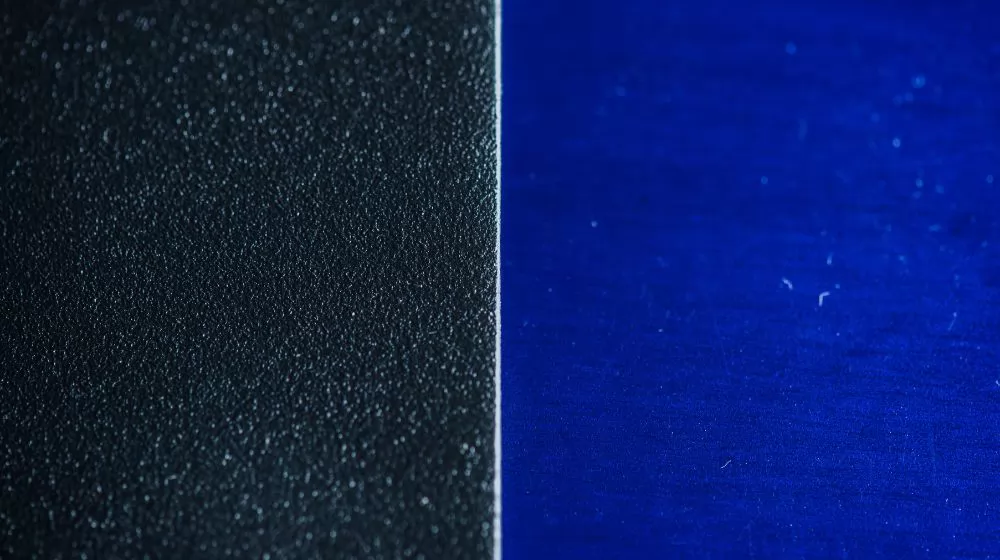
Chrome plating and powder coating are two distinct finishing processes with differences in application, appearance, durability, and environmental impact. Here are the key differences between chrome plating and powder coating:
1. Process:
Chrome Plating: Involves electroplating a thin layer of chromium onto an object's surface. The object is immersed in a chromic acid solution, and electric current is used to deposit chromium, resulting in a shiny finish.
Powder Coating: Involves applying a dry powder to the surface of an object. The powder adheres electrostatically, and the coated object is then cured in an oven, allowing the powder to form a durable and attractive finish.
2. Material Used:
Chrome Plating: Utilizes chromium, a metal with corrosion-resistant properties, for the plating process.
Powder Coating: Involves a powder made of finely ground particles, typically composed of resins, pigments, and additives.
3. Appearance:
Chrome Plating: Provides a shiny, mirror-like finish that is often used for decorative purposes. It has a distinctive metallic appearance.
Powder Coating: Offers a wide range of color options and finishes, including matte, glossy, and textured. The appearance is not limited to metallic finishes.
4. Durability:
Chrome Plating: Known for its excellent corrosion resistance and hardness. It is durable against wear and tear.
Powder Coating: Provides good durability, resistance to impact, and is less prone to chipping or peeling. The finish can be customized for specific applications.
5. Environmental Impact:
Chrome Plating: Involves the use of toxic chemicals, including hexavalent chromium, posing environmental and health risks. Proper disposal and handling are crucial.
Powder Coating: Generally considered more environmentally friendly as it produces less hazardous waste, emits fewer volatile organic compounds (VOCs), and does not involve toxic chemicals like hexavalent chromium.
6. Application:
Chrome Plating: Commonly used for decorative purposes in automotive parts, home fixtures, and other items where a shiny metallic finish is desired.
Powder Coating: Widely used in various industries for both functional and decorative purposes, offering versatility in terms of color and finish.
7. Cost:
Chrome Plating: Typically more expensive due to the cost of chromium and the complexity of the electroplating process.
Powder Coating: Generally more cost-effective in terms of material, labor, and equipment costs.
In summary, while both chrome plating and powder coating serve different purposes, the choice between them depends on factors such as aesthetics, durability requirements, cost considerations, and environmental impact. Each method has its advantages and is suited to specific applications based on these considerations.
When it comes to choosing a finishing technique for surfaces, the comparison between powder coating and chrome plating often centers on strength and durability. Both methods offer unique qualities, and the determination of which is stronger involves considering various factors such as resistance to corrosion, impact resilience, and overall robustness. In this exploration, we delve into the strengths of powder coating and chrome plating, seeking to understand their respective advantages in different applications.
If you have questions about the choice between the two, you can consult Wintoly to provide you with solutions and high-quality powder coating products!
1. What is powder coating?
2. What are the benefits of using powder coating?
3. What industries commonly utilize powder coating?
4. How do I choose a reliable powder coating supplier?
5. What types of powder coatings are available?
6. What is the typical minimum order quantity (MOQ) for powder coatings?
7. Can I request custom colors or formulations?
8. How do I ensure quality control when ordering powder coatings?
9. What are the typical curing requirements for powder coatings?
10. What are the payment terms typically offered by powder coating suppliers?
11. How can I request samples of powder coatings?
12. What should I consider when applying powder coatings?
When selecting a powder coating supplier, it’s essential to evaluate their product offerings, quality assurance processes, and customer service. Doing thorough research can help you find a supplier that meets your specific needs effectively.

 terrychen@wintoly.com
terrychen@wintoly.com
.png) 0086-757-85407388
0086-757-85407388
 6 Chaoyang Rd., National Demonstration Eco-industrialzone, Nanhai, Foshan,Guangdong,China
6 Chaoyang Rd., National Demonstration Eco-industrialzone, Nanhai, Foshan,Guangdong,China

.png)
